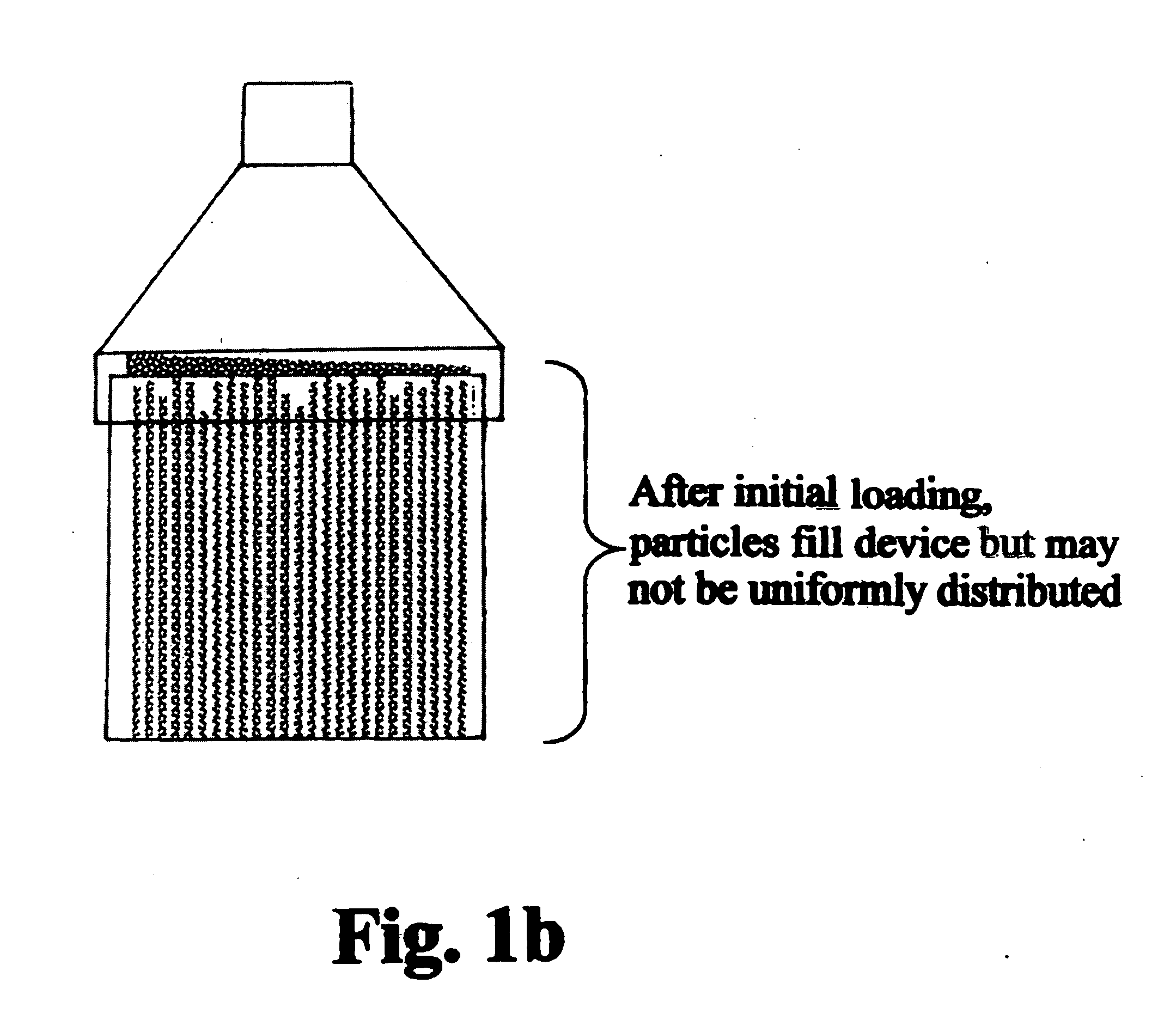Loading/Unloading of Particulates to/from Microchannel Reactors
a microchannel reactor and microchannel technology, applied in fluidised-bed furnaces, furnace types, furnaces, etc., can solve the problems of reducing the efficiency of the reactor,
- Summary
- Abstract
- Description
- Claims
- Application Information
AI Technical Summary
Benefits of technology
Problems solved by technology
Method used
Image
Examples
example 1.1
Loading Particulate into Microchannels by Channel Dosing
[0037]Catalysts loaded into microchannel devices used in microprocessing technology must meet stringent physical and chemical standards to ensure successful operation. Achieving a high level of performance relies not only on the overall quality of the catalyst particulate but the ability to correctly integrate the material into the microchannels of a device while maintaining stringent height and bed uniformity control within a relatively narrow tolerance window.
[0038]Measuring channel volume and charging the prerequisite amount of catalyst to the channels is challenged by geometric variability of individual microchannels from the fabrication process used to assemble a reactor. The variation in channel dimensions can negatively affect maintaining sufficiently uniform channel to channel variation in catalyst mass loaded to each individual channel.
[0039]In addition, the basic overall flow characteristics of catalyst powders as the...
example 1.2
Loading Particulate into Microchannels Via Fluidization
[0068]One method for loading a particulate into a microchannel or multichannel reactor is fluidization. Granular particles may be placed in a hopper above a reactor or partially or fully loaded within the channels, as shown in FIG. 1a. The header is designed with enough volume necessary to allow the particles to leave the channels and achieve a fluidized suspension over the channels and not leave out the exit tubing. FIG. 1b shows a potential bed loading using this process. Gas flows upwardly and is adjusted to match the terminal velocity of the particles to fully fluidize all particulates in the hopper or volume above the channels, as shown in FIG. 1c. The gas velocity is reduced to allow the particulates to drop or fall into the channels as shown in FIG. 1d. A secondary step may be used to further redistribute the particles from channel to channel to improve the uniformity by flowing the gas to the point of incipient fluidizat...
example 1.3
Loading Particulate into Microchannels Layer by Layer
[0073]A mechanism was designed to quickly and efficiently deposit a specific aliquot of catalyst powder into parallel microchannels that are further arranged in repeating rows—to create a two dimensional array of parallel microchannels. The loading device was evaluated in a series of practice trials. Later the device was used to successfully integrate catalyst powder into the waveform channels of microchannel reactor in preparation for reactor operation and performance testing.
[0074]Measuring total channel volume and charging the prerequisite amount of catalyst to the channels appears intuitively simple, but geometric variability in the channel dimensions and other procedural variables can lead to irregular channel to channel particle packing densities. The following inventive process deals with filling large numbers of channels in parallel with single aliquots of particles in a time-efficient manner while avoiding individual chan...
PUM
 Login to View More
Login to View More Abstract
Description
Claims
Application Information
 Login to View More
Login to View More - R&D
- Intellectual Property
- Life Sciences
- Materials
- Tech Scout
- Unparalleled Data Quality
- Higher Quality Content
- 60% Fewer Hallucinations
Browse by: Latest US Patents, China's latest patents, Technical Efficacy Thesaurus, Application Domain, Technology Topic, Popular Technical Reports.
© 2025 PatSnap. All rights reserved.Legal|Privacy policy|Modern Slavery Act Transparency Statement|Sitemap|About US| Contact US: help@patsnap.com



